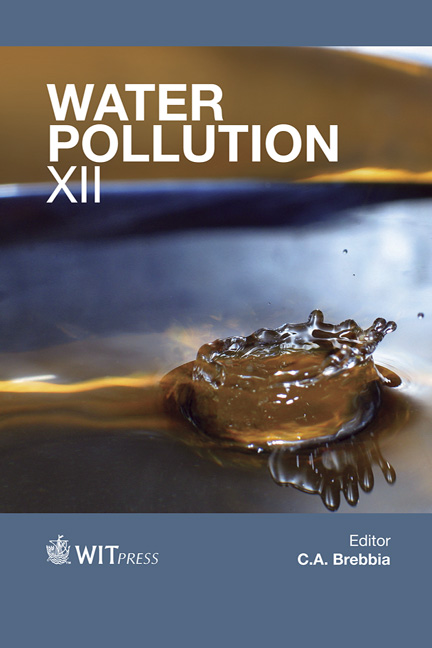Total Solids-retention In Activated Sludge: Modelling And Simulation
Price
Free (open access)
Transaction
Volume
182
Pages
12
Published
2014
Size
376 kb
Paper DOI
10.2495/WP140281
Copyright
WIT Press
Author(s)
C. Fall, A. Jiménez-Zárate, C. Martínez-García, M. T. Olguín, E. Millán-Lagunas & Y. Comeau
Abstract
Research on new ways for minimizing the residues generated in biological wastewater treatment has been encouraged within the context of activated sludge models (ASM). One of the methods used for minimizing sludge is through the elimination of traditional sludge wastage (WAS), while build-up of the inert solids in aeration tanks and is avoided by other means; the development of fine screens to remove the inert particulate organic fraction (XI), hydrocyclones for inorganic suspended solids (ISS) and different kinds of on-line digesters to further biodegrade the endogenous residues (XP) via the return activated sludge line (RAS). In this research, a model and a simulation program was developed, which was able to mimic the apparent behavior of such activated sludge variants with low-solids-production (LSP-AS). This model is an extended ASM1 assuming a small first order biodegradation constant for XP (kXP = 0.007 d-1) and black boxes representing the XI and ISS inerts-removal. The simulations depict the way that different components of solids build up in the aeration tanks when traditional activated sludge (C-AS) is operated at very high solids retention times (> 100 d). The simulations showed that the C-AS process could, hypothetically, be replaced by LSP-AS variants with similar levels of active biomass and of mixed-liquor suspended solids. The kXP was approximately 0.007 d-1 and, for this case, at least 2% (and 6%) of the RAS flow had to be sieved (and digested, respectively), to avoid the accumulation of XI, ISS and XP. Furthermore, the size of the on-line digester was about twice the volume of the aeration tank. Keywords: Aquasim, ASM1, endogenous residues, inerts, minimization.
Keywords
Aquasim, ASM1, endogenous residues, inerts, minimization.





